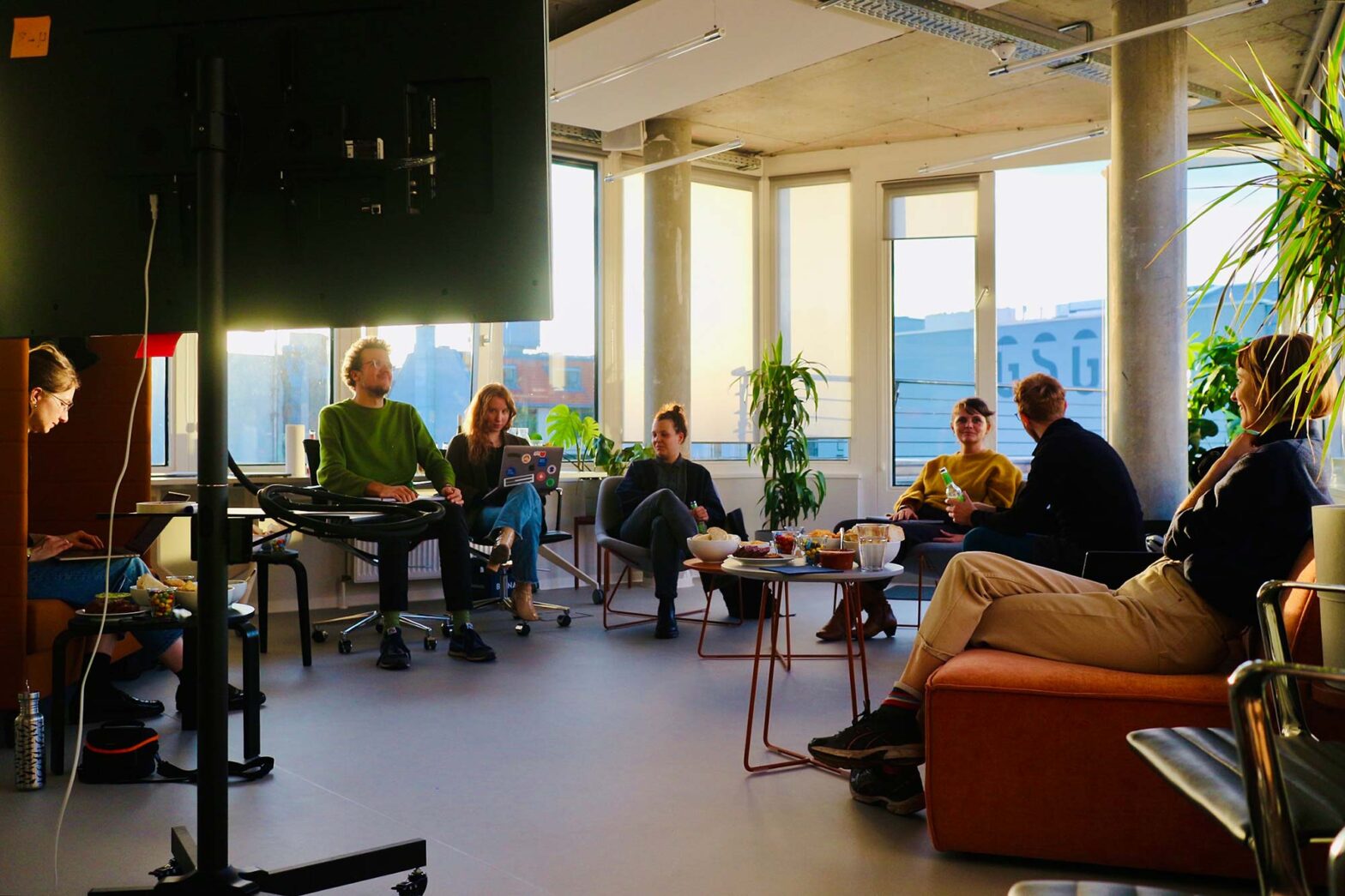In a couple of days, I’ll be at the German government’s Digital Service for 6 months and finish my probation period.
In one way, I feel, I’ve done quite a few things. In another, I sense I haven’t done all what I wanted and probably should have done. There’s plenty to do in any case. If time allows, I’ll share more thoughts on it next week.
This week, on Wednesday, Charlotte and Tine organised and ran a ‘Let’s talk practice’ afternoon session. Most members of our design team could make it and then spent 2.5 hours discussing user research approaches, methods and research ops challenges. The session gave us the space, time and depth that we don’t have in our weekly 50-minute design gatherings on Wednesday. But it’s so important to take the time for exchange, to reflect and share stories.
So we need to review the time we have reserved for that on a regular basis.
Creating awareness and building capability to do the right things well
Getting more parts of government adopt iterative, user-centred ways of working is one of the objectives of the Digital Service. Reinventing the wheel is not necessary for that. Because plenty of good practice is well documented. It often only needs to be more widely shared.
When talking to a dozen of project partners from our Tech4Germany fellowship this week, I learned that most of them had never heard of the service standard. German government presented its official version, which is clearly inspired by similar international standards, in summer 2020. Led by the Federal Ministry of Interior, it got a visible push for the first year, but then things went more quiet in the past month. A study conducted in October and November 2021 showed that more awareness and resources are needed to make the service standard a standard.
My point was the usual: The service standard helps teams, their organisations and leaders develop and run great public services. The German service standard contains 19 principles grouped into 6 areas:
- user-centricity
- approach
- collaboration
- openness
- technical operation
- metrics and effectiveness
They make the standard fairly holistic and helpful for internal teams, external teams, contractors, and also senior leadership.
While some resources surrounding the service standards exist, even a related service manual, there has been done very little to promote it coherently and link its adaption to funding.
Some people have described it as a dead fish in the water. But that would be a rushed conclusion and a waste of earlier efforts. The German government’s service standard is far from perfect, but it’s a unique tool in the still small toolbox (especially in comparison to the ones other governments like the UK have built). So discarding it is not an option we can afford.
Sure, its language can be improved, awareness heightened and more examples collected. But, in the absence of other guidance, regulation or power tools, non-digital generalists from ministries commissioning external teams to build digital things can refer to it and demand it to be followed. That increases the consistency of outputs and quality of delivery.
That was the point I tried to bring across when talking to ministry colleagues. I hope they get curious and want to spend more time with it. I also hope someone reaches out and asks for more detail.
Spreading service thinking and increasing service literacy, my colleague Sabrina and I will run the much-iterated ‘Introduction to Service Design’ training I co-developed at GDS in late November at the DigitalService. The 1-day training has been delivered over 35 times, and more than 700 people have participated. We will offer the 20 spots for designers first and then open it to all disciplines internally.
As mentioned last week, Nadine and I ran the first of two ‘accessibility ambassador’ kick-off sessions. Within 45 minutes, we recapped all accessibility activities and initiatives so far described the idea and workshopped the direction we should take.
Our draft job description said the following:
Who you are:
- a designer
- an engineer
- a product manager
with an interest in championing accessibility for your product or service.
What you do:
- become the go-to person on accessibility for your team
- educate yourself about accessibility further
- attend additional accessibility training
- have an exchange with other accessibility ambassadors at DigitalService
- grow our collective accessibility capability
In the interactive part, we were curious to hear about colleagues’ motivation, why they are there and why they are interested in participating in this initiative. We wanted to know what they think they can bring to the table and what contributions they want to make. Then we did a time jump and asked where the DigitalService should be in 2 years regarding digital accessibility. We derived possible work areas from what they want to have achieved by then. Finally, we wanted to know what the future accessibility ambassadors think are our most urgent development areas now and in the next 2 years.
To make it as open and flexible as possible, we will run a second identical session early next week before summarising the workshop inputs and proposing the next steps.
One thing we know already: We intend to trial a short introduction of accessibility in late November. We will offer it to recent new joiners. Afterwards, we’d like to make it part of the regular onboarding process for everyone at the Digital Service.
What’s next
Making hopefully good use of my learning and developing budget, I’ll be going to attend the ‘Leading Design’ conference in London. It takes place in my favourite cultural place in the world, at the Barbican Centre.


Ein Kommentar
Die Kommentare sind geschlossen.